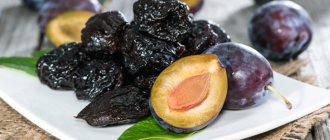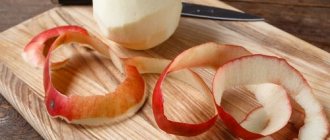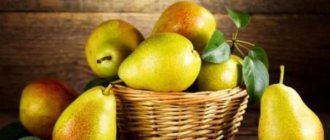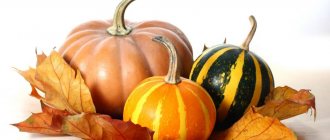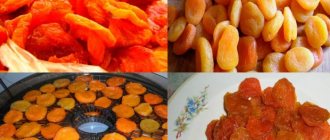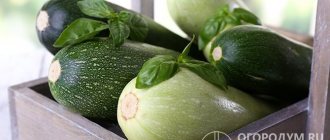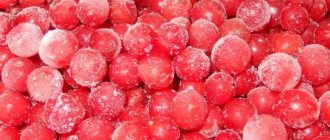Plum is one of the oldest cultivated plants grown by humans. It grows almost everywhere, except in the Far North. Plants up to 4.5 meters, the fruit depends on the variety. Most often about 5 cm, oval in shape. The pulp is juicy and soft, with a hard bone inside. The fruits can be of different colors - from yellow, white to dark red and purple. The taste qualities are very high - cultivated varieties have a very sweet taste. Wild plum is sour with a tart aftertaste.
Plum can be prepared in the form of jam or aromatic compote or jam. Juice is prepared from fresh fruits and delicious wine is made. Since ancient times, people dried fruits and obtained tasty and healthy prunes.
The benefits of prunes
Dried fruits - raisins, dried apricots, prunes, figs - were a favorite delicacy in winter. They are a source of vitamins and mineral salts. Dried fruits improve immunity and help fight viruses and bacteria.
Prunes are known for their positive effects on the digestive system. After eating, prunes, rich in dietary fiber, remove toxins and cleanse the intestines of old fecal debris.
Prunes are recommended for obesity and cardiovascular disorders. Dried plums, despite their sweet taste, do not increase blood sugar. For this reason, it can be recommended for patients with diabetes. The ability of plums to lower cholesterol levels in the blood has been noted.
There are a large number of antioxidants that bind free radicals. This prevents early aging and the possibility of developing cancer. Plums are good for brain cells and increase learning ability. Prevents the development of Parkinson's or Alzheimer's disease.
Plums are known to improve bone health. This can be very important for people with osteoporosis. The high content of minerals strengthens the skeletal system. Most often, osteoporosis occurs in women over 50 years of age, caused by hormonal imbalance.
Useful properties and contraindications of dried prunes
Dried plums are rich in vitamins E, PP, B2, C. Fruits are valued for their high content of phosphorus, iron, and magnesium. Potassium and calcium are present. Contains 9 important amino acids. Tryptophan occupies a special place. Without this substance, the “happiness hormone” serotonin is not produced.
Other beneficial properties of prunes:
- eliminates constipation, cleanses the intestines;
- reduces blood pressure;
- regulates water-salt balance;
- increases hemoglobin levels, helps cope with anemia;
- improves brain function;
- strengthens the walls of blood vessels;
- has a positive effect on the nervous system;
- increases immunity.
What kind of prunes do you use?
PurchasedCooked
The benefits of dried plums are obvious. However, the product may not be suitable for all people. There are a number of contraindications: intestinal upset and diarrhea, low blood pressure, stomach diseases. Prunes will cause harm if you have an individual intolerance
People who are overweight or obese should consume dried fruits with caution.
Dried homemade prunes are prepared in air, in the oven, electric dryer, or microwave. Calorie content is about 230 kcal. The product is good for health, but has a number of contraindications.
History of prunes
It is believed that prunes were first produced in Egypt. People have noticed that dry plum fruits do not spoil for a long time, are very tasty and nutritious. This was the first fruit that was dried for the winter. Dried fruits have been highly valued at all times. In the East, there is always a cup of raisins, dried apricots and prunes on the table. This is a favorite delicacy of children and adults. It is added to meat dishes and vegetables.
Prunes were brought to Russia in the 17th century from the countries of the East and France. High-quality French prunes were highly valued.
Currently there are no problems with prunes. It can be bought almost everywhere. It is packaged in sachets and can be used immediately. A lot of prunes are harvested in Central Asia. They grow plums on an industrial scale and dry them in the open sun or in special dryers.
To give it a marketable appearance and better preservation from rotting and fungal attack, plum fruits are fumigated with sulfur dioxide. This gives the product a shiny, appetizing look. Plums are better stored. But sulfur dioxide is a rather toxic product for the body. Especially you should not give such prunes to children. It is for this reason that children need to dry plums themselves. Another reason is the high price of prunes on the market. It is better to dry it yourself than to buy a low-quality product at an expensive price.
Making quick plum jam
So, we have a plum in front of us. Making jam from it is a real pleasure. One kilogram of your favorite fruit will require two kilograms of sugar. We scald the meat grinder with boiling water and pass the plums through it onto a fine grate. Naturally, before this, the plum was washed well, and then the seeds were removed from it.
Pour granulated sugar into the resulting mass and leave for an hour until the juice releases. Stirring, boil for 20 minutes over medium heat, pack into jars and close them with lids. In the case when the fruits are juicy, it will take longer to cook, determine this by the degree of thickening. If you don’t know what to make from our fruits now, remember how to dry plums in an electric dryer, keep them in this form until winter, and then decide what to make from them.
Methods for harvesting plums at home
There are several ways to dry plums at home. You need to choose the most convenient one. There are certain rules that must be followed when performing this procedure.
How to prepare plums
Before you begin the drying process, you need to prepare the fruits.
It is known that not all plums are suitable for drying. You need to choose only the variety that is best suited. Sorting plums is an important process on which the entire result will depend. Too juicy and watery varieties are not suitable; it is better to make jam from them or use them for food.
It is necessary to select only good, ripe fruits. Do not use rotten or damaged plums. It is not recommended to dry too ripe ones. Unripe plums will be sour and hard when dried.
Plums affected by disease should be thrown away immediately and not trimmed. Fungi are known to attack the entire fruit at once, although there may be no obvious signs. By cutting off only the affected part, you expose yourself to the risk of eating infected fruit. If you don’t like something, it’s better to throw it away immediately.
The best option is to collect a fresh harvest of plums directly from the tree. On a sunny, clear day, you need to collect the required amount of fruit directly from the tree. No need to shake it to the ground. The fruits are very delicate and will immediately bruise when falling from the tree. Such plums can only be used for jam or preserves. Plums must be picked carefully so as not to crush the fruits.
The sorted plums are washed under running clean, drinking water, trying to remove all dirt and dust.
The second stage is removing the seeds. Using a sharp knife, cut the fruit lengthwise and carefully remove the seed. It is best to dry plums in halves. But the seed can be removed through the stalk without cutting the fruit. The result is prunes with the structure of the fruit preserved. This is a convenient method that allows you to dry it in the sun. The prunes turn out clean, nothing gets inside.
Small fruits are dried by removing the pit through the stalk. Large plums are usually cut into halves. This speeds up the drying process of the fruit.
Determining the quality of dried fruits
The readiness of dried fruits is determined by the following criteria:
- when pressed, no cracks appear and no juice is released;
- dried fruits should be elastic, hard, but should not crumble when pressed;
- the fruits should not stick to your hands.
Dried plums should be stored in a well-ventilated area. Suitable containers include fabric bags, paper bags and boxes made of wood or cardboard.
Storage in glass jars is allowed, while the plums are sprinkled with granulated sugar. Products with a strong odor should not be placed near dried fruits, because dried plums can absorb it.
Don’t forget to read the article that describes the benefits of plums.
Read how to grow peaches at home by following the link: https://rusfermer.net/sad/plodoviy/posadka-sada/poleznye-svojstva-persika-i-sushhestvennye-momenty-pri-ego-vysadke.html
Blanching
For better storage, the method of blanching the fruit is used. Selected and washed fruits are dipped for 5 or 10 seconds in a hot soda solution (1 tablespoon of soda per 1 liter of water). After this, the plums should be rinsed in cold water.
Blanching causes cracks to appear in the thick skin of the plum. The drying process will be faster. Baking soda also prevents fungal infections.
After blanching, prunes retain firmness and elasticity, the color is rich, and the fruits are shiny.
Packing and suitable place
The material of the containers or containers does not matter at all. Prunes themselves are so aromatic that they are not afraid of foreign odors. But other products can become soaked. There is no doubt about it, the fragrant, juicy smell beckons. But bread or buckwheat with a prune aroma is not to everyone’s taste.
The only thing that will kill this magical smell is household chemicals. Therefore, even for a short time, do not leave the fruits in one place next to washing powder or dishwashing detergent.
Read also: Sweet cherry “Fatezh”: description of the variety, characteristics, photos, planting, care
It is recommended to pack the treat airtight. For example, a glass jar with a tight lid, a metal container with a screw-on lid, or a ceramic pot with a silicone stopper.
- plastic bag with zip closure
- wooden or birch bark box
- cardboard box
- canvas or linen bag
More durable materials are subject to heat treatment. They are doused with boiling water and dried, naturally, after thoroughly washing them with hot water and baking soda.
Fragile materials are sprayed with a strong saline solution and dried thoroughly. Then you can apply the prunes and put them away for storage. Prepare the saline solution as follows:
- Dissolve 500 g of rock salt in 1 liter of clean drinking water.
- Iodized or extra are absolutely not suitable!
- Thoroughly soak the inside surfaces of the boxes and drawers.
- Fabric bags can be soaked entirely for 2 minutes, then dried thoroughly.
Large stocks of dried fruits can be stored in a specially designated pantry. Of course, if you have it. In this case, you don’t have to worry about packaging, but simply string the fruits on a strong thread. Then all that remains is to hang them like beads on a Christmas tree.
To avoid spoilage of the product, you need to quickly dip the strings with fruits in a weak solution of salt or soda, then dry them thoroughly. Before use, all you have to do is rinse the prunes thoroughly and you can eat.
You can prepare a solution using 2 tbsp per 1 liter of clean water. l. regular table salt or 1 tbsp. l. soda This treatment does not affect the taste of dried plums at all. But it protects well against all kinds of mold bacteria.
All this dancing with solutions and threads is not needed if you have a little dried fruit. But when you have dried three buckets of plums yourself, take this method into use. Because this amount of drying simply won’t fit in the refrigerator or on a shelf in a closet.
Advice. This method is suitable only for those who are sure that moths or ubiquitous bugs will not infest them, because salt will not stop these voracious comrades.
The process of drying fruits in the sun
It is necessary to prepare a place where the plums will dry. Often a canopy is used for this, which protects from rain and dust. Can be dried outdoors on a bright, sunny day.
- The plum halves are placed skin side down, without touching each other, on a tray or baking sheet. If there is a lot of drainage, you can use a special flooring.
- Gauze is laid down, the plums are laid out and covered with a second layer of gauze on top. This method will help protect sweet fruits from insects. These could be ants, flies, various insects, wasps.
- You need to dry it in a well-ventilated place. Air circulation will speed up the drying process.
- The drains must be periodically opened and checked to see how they dry. You can stir them a little to speed up the process. You can switch sides, so the process will go faster.
- If the nights are cool, then it is advisable to bring the plums home. Morning dew may wet the fruit or it may rain at night.
In the open air, plums dry for about a week.
How to store prunes
The best way to store prunes is to store them in clean and dry glass jars. They need to be covered with plastic lids. The jars need to be shaken periodically to prevent the fruits from sticking together.
Some housewives store it in thick canvas bags that allow air to pass through. Prunes store well in a dark, dry place. You can use thick paper bags.
The main condition is the absence of moisture and sudden temperature changes.
Terms and conditions of storage of dried plums
To ensure that dried plums, prepared for future use, do not spoil, you need to know how to store them correctly:
- spiced plums doused with olive oil or honey (an excellent preservative) can be stored in a tightly closed container on the refrigerator shelf for 1 year;
- It is recommended to keep sweet dried fruits (without filling) in airtight containers, after sprinkling the slices with granulated sugar or powder.
How to dry prunes in the oven
Many lovers of dried fruits prefer to dry the fruits in the oven. On the positive side, the process goes much faster, the fruits dry evenly and are not affected by insects or covered with dust.
Among the negative aspects, it is worth noting the high energy consumption; it is impossible to dry a large number of fruits at once.
Oven drying process
- Selected fruits are cut into halves and the pit is removed.
- Blanch for 20 seconds in a soda solution. After this, rinse the fruits in running cold water.
- Spread parchment paper on a baking sheet and place the plums cut side up. The halves should not touch each other.
- We set the temperature to 50 or 60 degrees. The above is not recommended, as the plum will simply cook at high temperatures. Leave for 3 or 4 hours. To speed up the process, you can turn on convection.
- The dried plum should cool for 3 hours, then it should be dried again at 70 degrees for 6 hours.
- The finished prunes are dried at a temperature of 100 degrees for 30 minutes. The skin of the fruit is shiny, the prunes are elastic to the touch and do not stick to your hands.
| Stages | Temperature(oC) | Oven time | Cooling down (hour) |
| Stage 1 | 50 | 4 hours | 3 hours |
| Stage 2 | 70 | 6 hours | 3 hours |
| Stage 3 | 100 | 0.5 – 30 min | 6 hours |
Correct cooking technology will ensure uniform drying of the product and preserve its taste. Prunes turn out sweet and aromatic. This is an excellent addition to meat dishes and desserts.
Selection of plums for drying and preparation of fruits
Not every variety of plum is suitable for preparing dried fruits. Experience shows that “Hungarian” and “Renklod” are best suited for this: they have fairly strong pulp without wateriness and the necessary sweetness.
Proper selection and preparation of fruits are important.
- You need to choose ripe, but not overripe fruits, without worms, damage or bruises.
- Before processing, divide the plums according to size. Drying times will vary, and while larger fruits dry out, smaller ones may become crispy dry.
- Rinse the fruits thoroughly and remove leaves and stems.
- If you have a lot of plums, you can use the experience of industrial production: before drying, blanch the fruits for 2-3 minutes in a solution of 0.1% baking soda. This will create small cracks in the shell, through which moisture will be removed much faster.
- Rinse the blanched plums with running cold water and place on napkins or a clean cloth to dry.
It is very important to select the right variety of plums in good condition for drying.
By the way, some housewives recommend removing the pit from plums: this way the pulp dries faster due to the evaporation of moisture. But it seems to me that whole dried fruits are much tastier and sweeter, and they retain more benefits. Children also really enjoy gnawing the pulp of prunes from the pits.
Here's some advice for those who plan to use prunes for making confectionery. Pour sugar syrup over the prepared fruits at the rate of 450 g of sugar per 1 kg of fruit, put on medium heat, bring to a boil, cool, wait until the excess liquid has drained, and then dry. The prunes will become even sweeter and richer. However, this recipe is not suitable if you like sourness in desserts.
Drying in an electric dryer
An electric dryer is a special device that allows you to dry a large number of fruits in a short time. The process requires electricity consumption. The prunes are tasty, evenly dried, eliminating the risk of product spoilage.
- Good, dense, ripe plums are selected for drying.
- Rinse under running water to remove dust and dirt.
- Blanching in a soda solution followed by rinsing under cold running water. This will allow you to preserve the finished product longer.
- Arrange the halves cut side up, without touching each other, in one layer.
The cooking process takes place in three stages.
- Dry at 40 or 50 degrees for 6 hours, then cool for 6 hours.
- Drying at 60 degrees – 6 hours.
- The third stage – temperature 80 degrees – 6 hours.
| Stages | temperature (оС) | time (hour) | cooling (hour) |
| Stage 1 | 40 — 50 | 6 | 6 |
| Stage 2 | 60 | 6 | 6 |
| Stage 3 | 80 | 6 | 6 |
After cooling, remove the prepared prunes to a dark, cool place.
Microwave cooking
This is one of the fastest ways. The plum is dried evenly without losing its beneficial properties.
Cooking method:
- Wash the prepared fruits well under running water and dry on a towel.
- Place the cut, seedless fruits on a microwave dish.
- Set the timer for 30 seconds and set the power to 250 W.
- After this, turn the plums over and set them again for 30 seconds at the same power.
- This must be repeated until completely dry. It usually takes from 3 to 5 minutes.
There is no need to increase the power, as the plum will simply cook.
Disadvantages - you can cook very little prunes at a time.
Useful tips
- I would not recommend drinking prune compote constantly and in large volumes, since it has a laxative effect, but still you should not deny yourself 1-2 glasses.
- If your patience lasts for 2-3 months, and during this time you do not drink the compote prepared for the winter, then you will be rewarded later: dried fruits have the property of gradually saturating the syrup with its taste. As it infuses, it becomes more and more delicious.
- People often ask how many dried plums can be eaten at one time. Doctors recommend consuming no more than 10 pieces per day, and it is best to cook delicious compotes from them.
- If you suddenly bought fermented prunes, I don’t recommend cooking with them, they will ruin any dish. But there is always a way out! You can make homemade wine from sour dried plums; it will ripen faster and turn out wonderful.
- When breastfeeding, a newborn often experiences constipation, but taking pills is not very beneficial for a baby, so I advise you to use a natural laxative. It is best to cook prune compote without sugar.
- Children under one year old with intestinal upset and constipation can be given a decoction of dried plums, because it has mild laxative properties. For a 6-month-old baby, you can give it completely without fear because it does not irritate the walls of the stomach and intestines, but for a 4-month-old baby, serving such a drink is still possible only in agreement with the attending physician.
- At 2 years old, a child can be given prunes either in compote or just like that, after washing them thoroughly and soaking them a little. Although I don’t recommend getting carried away either, it is still a natural laxative, so limit yourself to 2 pieces or 100 ml of compote per day.
- In industrial production, when drying, plums are treated with sulfur dioxide so that they do not cake and spoil. It is necessary to get rid of the consequences of such treatment before use: the dried plum must be soaked for 30 minutes in water and then rinsed well with running water. And to completely get rid of E220, you need to repeat this procedure 2-3 times.
Cooking in an air fryer
- For drying, you can use small fruits with pits; large ones are best cut in half.
- The plum is dried at a temperature of 65 degrees for 40 minutes. Then you need to leave it to cool for 1 hour.
- The procedure must be repeated 2 times. Then leave the plums until the next day.
- The next day, dry 3 times for 40 minutes at the same temperature with an interval of 1 hour.
First day:
| Stages | Temperature | Drying time (min) | cooling (hour) |
| Stage 1 | 65 | 40 | 1 |
| Stage 2 | 65 | 40 | 1 |
Second day:
| Stages | Temperature | Drying time (min) | cooling time (hour) |
| Stage 1 | 65 | 40 | 1 |
| Stage 2 | 65 | 40 | 1 |
| Stage 3 | 65 | 40 | 1 |
Place the prepared prunes on the table and let them cool completely, only then put them into dry glass jars and close with lids.
Dried pitted prunes can be stored for up to 2 years.
What kind of plum can be dried?
To obtain high-quality dried fruits, you need to make the right choice of plums. The fruits should be sweet, with dense pulp and not watery. The best varieties for preparing prunes are Hungarian or Renklod.
You should select whole, ripe fruits without damage, bruises, rot or worms. The entire portion of plums intended for processing can be divided into several batches by size, since large plums will take longer to dry, while small ones will dry out completely during this time and become tasteless.
